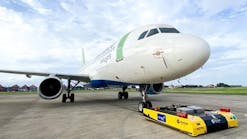In its 1999 notice of proposed rulemaking that modernized the repair station certification regulations, the agency affirmatively provided a method for its Part 145 certificate holders to “work away from the fixed location.”
The 2001 final rule confirmed a repair station’s ability to “temporarily transport” the elements necessary to perform work “due to a special circumstance, as determined by the FAA; or...to perform such work on a recurring basis” (see, 14 CFR § 145.203). The words “temporary” and “recurring” have been applied in different ways as the concept of “mobile response maintenance” has evolved.
Mobile response means the maintenance provider will appear where the aircraft is broken. Many companies employ mechanics with airframe and powerplant licenses to supervise, accomplish, and approve for return to service the work needed to get the aircraft back in the air. However, a mechanic can’t perform certain tasks without an inspection authorization, nor can that certificate be used by some fractional owner operators, air carriers, or commercial operators without separate qualifications. Therefore, more and more repair stations have acquired “work away” capabilities.
The regulations are not particularly clear on what is “temporary” and what can be “permanent” when it comes to placement of tools, tooling, equipment, materials, maintenance manuals and information, and personnel. Nor has the agency been able to clearly articulate the work or the “special circumstances” used in its determination if the work is not recurring.
What is clear are the requirements for a repair station to work away from its fixed location on a recurring basis. The certificate holder must have written procedures for performing work at another location (see, 14 CFR § 145.209(f)). That means there will be a quality system (see, 14 CFR § 145.211) that must correct discrepancies (see, 14 CFR § 145.211(c)(1)(ix)), which will eventually be instituting a safety management system involved in the performance of the aircraft maintenance. This is not a disparagement against individual mechanics, it is a factual assessment of the aviation safety system, and the choices private aircraft operators have in determining what or who performs work on their aircraft. It is also a comment on the complexity and sophistication of many “general aviation” aircraft, which can go beyond the knowledge and experience requirements of an individual mechanic.
When choosing a “mobile maintenance provider,” it would behoove operators, usually pilots, to call upon those that can provide the widest range of technical knowledge and services. The maintenance provider is not responsible for the airworthiness of the aircraft when it is performing restorative measures, that is the operator’s responsibility, or absent an operation, the owner. The maintenance provider is only responsible for the “work performed.” Repair stations with mobile capabilities can call upon the “home base” and its capabilities to assess and correct discrepancies. Obviously, so can an individual mechanic, but there is no quality system or other business assessment requirements associated with that certificate.
Sarah MacLeod is managing member of Obadal, Filler, MacLeod, & Klein, P.L.C. and a founder and executive director of the Aeronautical Repair Station Association. She has advocated for individuals and companies on international aviation safety law, policy and compliance issues for 30 years.




